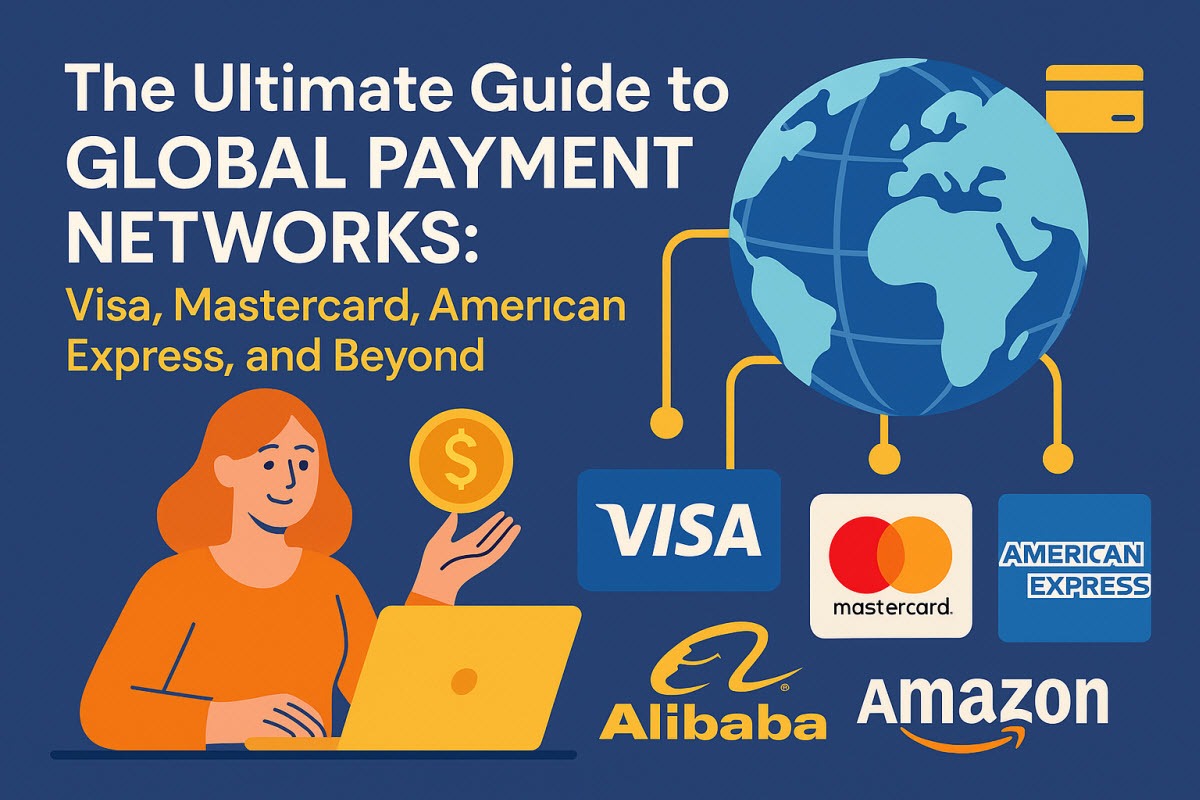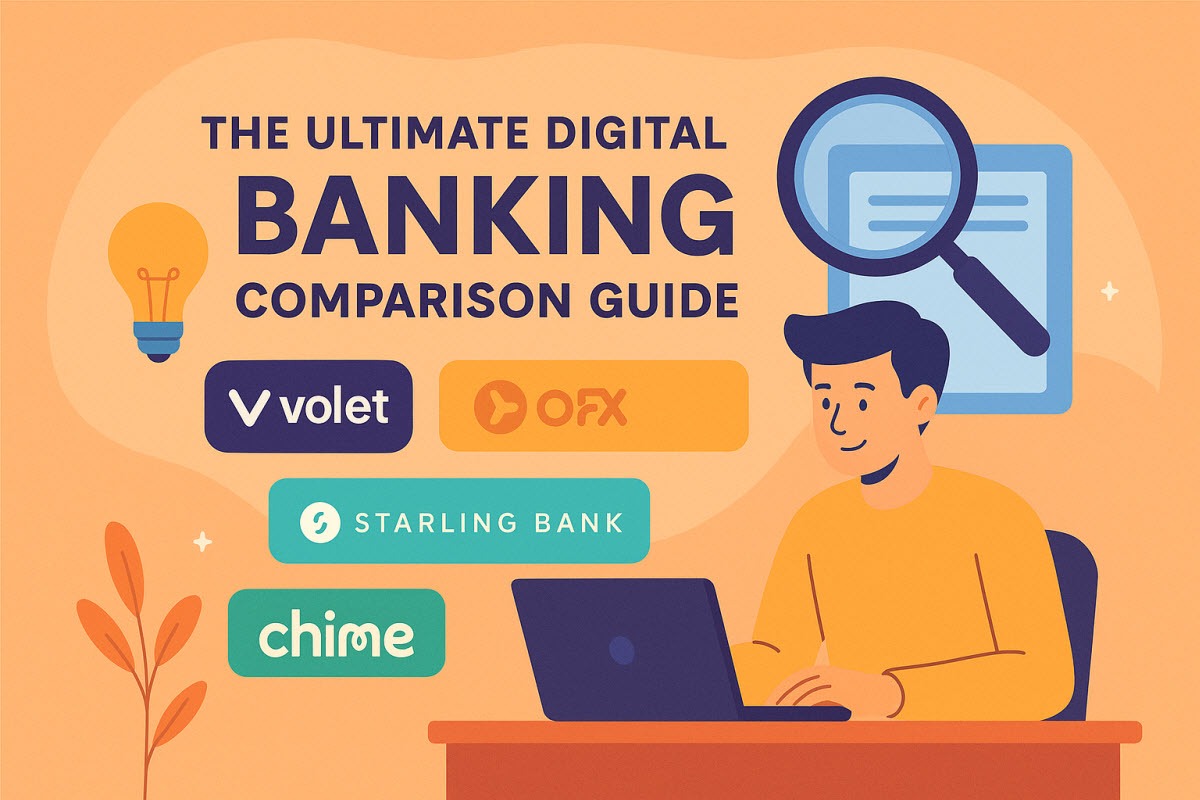The Ultimate Guide to Global Payment Networks: Visa, Mastercard, American Express, and Beyond
Several major networks dominate the global payment card industry, which are the main facilitators of daily billions of transactions that occur worldwide. Knowledge about these payment networks, their card types, fees, and global acceptance is essential for both consumers and businesses in today's interconnected financial ecosystem. This all-inclusive guide covers the world's top payment networks, from the most influential ones like Visa and Mastercard to less known but still noteworthy regional networks that are reshaping the global payments landscape.
Understanding payment networks vs card issuers
It is very important before going into the details of each specific network to have a general knowledge of how payment networks differ from card issuers. Payment networks (such as Visa and Mastercard) are the organizations which set up and run the transactions between merchants and banks and, in brief, comprise the payment processing infrastructure. Card issuers (usually banks) are the financial institutions that provide the credit to consumers and also issue the physical or digital cards.
Some companies, such as American Express and Discover, are payment networks and card issuers at the same time, which allows them to have a special kind of control over the entire customer experience starting from the card issuance and ending at transaction processing.
The Big Four: Dominant Global Networks
1. Visa - The Global Leader
Founded: 1958 (initially by Bank of America)
Headquarters: Foster City, California, USA
Website: www.visa.com
Market Position and Reach:
Visa Inc. is the parent company of the largest U.S. credit card networks and has a combined market value of $467.9 billion or 46.8% of the total market value. Visa is the least restricted payment network since it is present almost everywhere, in over 200 countries and territories.
Card Types and Products:
- Visa Classic/Traditional: Standard credit and debit cards
- Visa Gold: Mids cards with the offered benefits
- Visa Platinum: Top-tier cards with included travel and lifestyle perks
- Visa Signature: Very luxurious cards that come with a lot of extra stuff
- Visa Infinite: One of the absolutely top-of-the-line cards with amazing services for the cardholder
- Visa Electron: A debit card that can be used everywhere, on the internet and in the ATM
Fee Structure:
Visa uses interchange fees that differ from place to place, by the kind of transaction, and by the card level. They as a network don't decide the interest rates or the annual fees - these are decided by the banks that give out the cards.
Global Acceptance:
In the US Visa is the leading network. It has the biggest market share of 61% (in 2022). While Mastercard is at 25%, only. During the fiscal year 2024, it went through 233.8 billion transactions with a worldwide revenue of $35.926 billion which is 10.0% YoY increase.
Major Issuing Banks:
- JP Morgan Chase
- Bank of America
- Wells Fargo
- Citibank
- Capital One
- US Bank
2. Mastercard - The Innovation Pioneer
Founded: 1966 (initially as Interbank Card Association)
Headquarters: Purchase, New York, USA
Website: www.mastercard.com
Market Position and Reach:
Mastercard Inc. currently has a market capitalization of $364.4 billion, representing 36.4% of the total market value of the largest U.S. credit card networks. Mastercard is present in more than 210 countries and territories with a total of 3.158 billion cards active all over the world.
Card Types and Products:
- Mastercard Standard: Core credit and debit cards
- Mastercard Gold: Cards of average quality with more benefits
- Mastercard Platinum: Cards with extended services and quality
- Mastercard World: Cards of the high class with elegant advantages
- Mastercard World Elite: Cards with extremely high benefits and with rare access to
- Maestro: Worldwide debit card network (being gradually discontinued toward the use of Mastercard-branded debit)
Fee Structure:
In a similar way to Visa, Mastercard earns its money through interchange fees and network processing fees. The company's total revenue for the fiscal year 2024 was $28.167 billion, which is 12.2% higher than the previous year.
Global Acceptance:
Both Visa and Mastercard are known to be accepted virtually everywhere in the world, but American Express is not at their level, since it is only accepted in 160 countries as compared to more than 200 for the others.
Major Issuing Banks:
- Citi
- Capital One
- Synchrony Bank
- Barclays
- HSBC
- Deutsche Bank
3. American Express - The Premium Experience
Founded: 1850
Headquarters: New York City, New York, USA
Website: www.americanexpress.com
Market Position and Reach:
The market capitalization of American Express Company is $164.7 billion which is or 16.5% of the total market value of the largest U.S. credit card networks. The company which issues the card and operates the payment network are different for Visa and Mastercard, however, consumers experience is more directly under the control of American Express as it is a single entity.
Card Types and Products:
- Green Card: An entry-level charge card
- Gold Card: The mid-tier card with travel benefits
- Platinum Card: The luxury card of the category with awesome benefits
- Centurion Card (Black Card): The most limited and extraordinary invitation-only card
- Blue Cash Cards: Credit cards with an emphasis on cashback
- Business Cards: Corporate and small business products
Fee Structure:
American Express' total revenues for 2024 were $65.949 billion, reflecting an annual increase of 8.98%. Generally, Amex charges higher fees to merchants than its rivals such as Visa and Mastercard but offers top-notch customer service and attractive rewards in return.
Global Acceptance:
American Express: Supported in more than 160 countries, but with significantly more limitations in comparison with Mastercard, especially in smaller businesses and some areas. The number of proprietary credit cards issued by American Express and are active worldwide is 83.6 million; whereas those issued by third-party institutions total 62.8 million of the active American Express cards.
Unique Features:
- Closed Network Model: In which both the card-issuer and the payment processor are the same entity
- Premium Customer Service: Non-stop concierge services
- Exclusive Benefits: Airport lounges, travel insurance, purchase protection
- Membership Rewards: Flexible points program for travel and merchandise
4. Discover - The American Innovation
Founded: 1985
Headquarters: Riverwoods, Illinois, USA
Website: www.discover.com
Market Position and Reach:
Discover Financial Services has a market cap of $32.8 billion, representing 3.28% of the aggregate market value of the largest U.S. credit card networks. It reported a total revenue for the fiscal year 2024 of $20.020 billion, implying an annual growth rate of 12.2% YoY.
Card Types and Products:
- Discover it® Cash Back: Rotating categories cashback card
- Discover it® Miles: Travel rewards card
- Discover it® Student: Cards designed for students
- Discover it® Secured: Credit-building secured card
Global Network Strategy:
The Discover Global Network is the third largest payments network in the world. Discover has built extensive partnerships to expand global acceptance:
- China: China UnionPay is already beyond 3.5 billion cards in number and in terms of acceptance has given Discover access to more than 4.8 million merchants and around 415,000 ATMs in Mainland China
- Japan: JCB is extending Discover acceptance to over 1 million Japanese merchants and ATMs
- South Korea: Cooperating with BC Card network
Fee Structure:
Discover is both issuer and network, just like American Express, therefore it only has the identity of one company. It has been known to offer very competitive cashback rates and no annual fees on several cards.
If you want to know how new digital payment solutions work compared to the traditional card networks, you can read our in-depth review of digital wallets and global payment platforms.
Major Regional and Emerging Networks
5. UnionPay - The Chinese Giant
Founded: 2002
Headquarters: Shanghai, China
Website: www.unionpayintl.com
Market Position:
UnionPay in 2015, was the first time total payments value that the company surpassed both Visa and Mastercard and so it became worldwide the largest network by the number of transactions with (debit and credit card operations were combined). UnionPay cards are accepted anywhere from 181 different countries and regions.
Global Expansion:
- United States: More than 80% of merchants in the U.S. accept UnionPay cards, including major outlets stores in the US, duty-free shops at the airports, luxury brands like Chanel, Gucci, and Burberry
- Europe: As of 2016, UnionPay announced that over 2.2 million merchants in 39 European countries and regions are ready to accept UnionPay
- Asia-Pacific: Strong presence across the region
Partnership Network:
- Discover Alliance: Discover Network has announced the setting up of a joint venture with China UnionPay Network in May 2005
- PayPal Integration: Collaboration for seamless international transactions
- Regional Partnerships: Deals with local networks across the globe
6. JCB - Japan's International Network
Founded: 1961
Headquarters: Tokyo, Japan
Website: www.global.jcb
Market Position:
JCB is the only Japanese international payment brand with roughly 35 million merchants worldwide support. JCB cards are accepted in more than 160 countries and regions.
Strategic Partnerships:
By means of our alliance with American Express, JCB cards are accepted in Australia, New Zealand, and Canada; additionally, in the U.S., they can be used at the Discover Network.
Card Products:
- JCB Original Series: Luxury credit cards with extravagant services
- JCB CARD W: Trendy no-annual-fee credit card
- JCB Business Cards: Solutions for companies
- Co-branded cards: Collaborations with airlines and hotels
7. Elo - Brazil's National Champion
Founded: 2011
Headquarters: Barueri, São Paulo, Brazil
Website: www.elo.com.br
Market Position:
A network was created in 2011, supported by a holding company formed by the three financial services companies: Banco Bradesco, Banco do Brasil, and Caixa Econômica Federal. The system, which enables credit, debit and prepaid transactions, ranks third in Brazil by market share behind Visa and Mastercard.
International Expansion:
Elo cards have been accepted internationally on the Discover/Diners Club network since 2016. The Diners Club Brazil cards issued by Elo will be connected to the Discover Global Network that allows access to 42 million merchant locations and 2 million ATMs in over 190 countries and territories.
Card Features:
By March 2019, Elo had issued over 120 million cards. The focus for the network installments are on Brazilians buying patterns, where paying in installments is the most popular option.
ATM and Debit Networks
Cirrus (Mastercard)
Cirrus is an internationally interbank network, disbursing money to cardholders of Mastercard. Being a subsidiary of Mastercard, it links all the credit, debit, and prepaid cards of Mastercard, as well as cash cards that are issued by different banks globally, bearing the Mastercard/Maestro logo.
PULSE (Discover)
PULSE® enables the access to a larger number of cardholders than other ATM networks, that are not available. Moreover, with our low fees and competitive interchange, you can earn more while paying less. Allow cardholders to use more than 400,000 ATMs throughout the U.S.
LINK (UK)
It was in 2011 when Discover Financial Services made public an agreement reached with LINK, the leading ATM network in the UK, which offers cash access everywhere in the UK for Discover, Diners Club, and Global Card users.
Choosing the Right Payment Network
For Global Travel:
- Visa and Mastercard: The most extended list of international locations where these cards are accepted
- American Express: More luxurious benefits but fewer places where it is accepted
- UnionPay: The best choice for the Asia-Pacific region
For Premium Benefits:
- American Express: Top-of-the-line customer service and extras
- High-tier Visa/Mastercard: Elegant premium offerings
For Cost Efficiency:
- Discover: No foreign transaction fees, decent cashback
- Regional networks: Usually have lower fees in your home markets
For Business Use:
- American Express: Truly great expense management tools
- Visa/Mastercard Business: Long acceptance, inclusive reporting
The Future of Payment Networks
Digital Transformation:
Payment networks are turning to digital payments, contactless technology, and mobile integration more and more. The adoption of digital wallets and virtual card solutions is changing the way consumers engage with payment networks.
Emerging Technologies:
- Blockchain Integration: Delving into cryptocurrency and DeFi options
- AI and Machine Learning: Optimized fraud detection and tailored services
- Biometric Authentication: Fingerprint and facial recognition for payments
- IoT Payments: Connected devices and self-funded transactions
Regional Competition:
Local and regional networks are still the main competitors of global players, often winning with the help of the government and a deeper understanding of local market needs.
Fee Structures and Business Models
Interchange Fees:
The main source of income for the most part of the networks, a charge is made to merchants for every transaction carried out. Rates vary by:
- Card type (credit vs. debit)
- Transaction size
- Merchant category
- Geographic region
Network Assessment Fees:
Extra charges are imposed on financial institutions for the participation in the network and the use of the brand.
Value-Added Services:
- Fraud detection and prevention services
- Reporting and analytics
- Advertising and promotional support
- Managing the loyalty program
Security and Fraud Protection
Industry Standards:
- EMV Chip Technology: Card security standard all over the world
- Tokenization: Securing card information in digital transactions
- 3D Secure: New security measure for online purchases
- Real-time Monitoring: AI technology for detecting fraud
Network-Specific Features:
- Visa: Advanced Authorization and Zero Liability Protection
- Mastercard: Mastercard ID Theft Protection and SecureCode
- American Express: Fraud protection with the help of security teams specially assigned
- Discover: $0 Fraud Liability and account monitoring
Global Market Dynamics
Market Share by Region:
- North America: Visa and Mastercard have the biggest share
- Europe: Visa/Mastercard still strong but other players also exist
- Asia-Pacific: UnionPay is the leader in China, but regional networks are growing
- Latin America: While Visa/Mastercard are leading, local networks like Elo are also there
- Africa/Middle East: The most extending markets in the world with an increasing number of card users
Regulatory Environment:
Payment networks are such entities that are subject to different rules and regulations in every country around the world. The areas they are paying attention to the most are:
- Regulation of interchange fees
- Supervision of competition and antitrust aspects
- Privacy and protection of personal data
- Financial inclusion initiatives
Conclusion
The composition of the world payment network has changed remarkably over time and still changes under the influences of technological innovations, consumer preferences, and regulatory developments. Despite the fact that Visa and Mastercard always keep their positions at the top, in the meantime, several regional networks such as UnionPay, JCB, and Elo have already become international and continue to challenge the incumbent regime.
Understanding these networks, consumers will find it easier to select the cards that best fit their needs, whether it is prioritized by global acceptance, premium benefits, or cost-efficiency. On the other hand, businesses that have enabled the acceptance of multiple networks are winners because they have access to a more extensive customer base and more efficient transaction costs.
With the industry trend leaning more towards digital, the difference between conventional payment networks and new fintech solutions has become less clear. This has allowed for the creation of both new possibilities and challenges for everyone who is part of the global payments ecosystem.
It is necessary to comprehend not only the present situation but also the future trends and innovations which will influence the payments sector, to be successful in this ever-changing environment. A consumer would find it very beneficial to be aware of the latest developments in the payment networks if he/she would be picking the next card. Similarly, a business would find it advantageous if he/she would be employing a payment acceptance strategy to make the best financial decisions. To do so one needs to be updated on the major payment networks and their changing capabilities.






